

Vol. 40 (Number 28) Year 2019. Page 2
MARTÍNEZ Martínez, Luz Ángela 1; FERNANDEZ Hurtado, Saúl Rick 2; BURBANO Cerón, José Maria 3 & NGONO Fouda, Regine Adele 4
Received: 14/11/2018 • Approved: 10/08/2019 • Published 26/08/2019
ABSTRACT: The main objective of the present research is to understand the factors associated with industries ecological impacts in the world, demonstrating the importance of sustainable development oriented to the conservation of resources and strengthening of competitiveness through natural preservation. The methodology used was to study primary data, using descriptive analysis according to data obtained by the World Bank and other authors who have studied these environments in response to the hypotheses raised. As a result, a strong correlation was obtained between the variables of measurement, where there is no high dispersion versus the variables, which allows to clarify that the ecological development is pertinent according to the positive correlation and shown in the R squared that is close of 1, which indicates that the hypotheses demonstrates the need for development. It is concluded that the economies must recourse to the improvement of their environmental policies, promoting sustainable development where the adoption of positions that bind society and industries generate more economic development that adopts inclusive positions in a more equitable way for the world. |
RESUMEN: El objetivo principal de la presente investigación es comprender los factores asociados con los impactos ecológicos de las industrias en el mundo, demostrando la importancia del desarrollo sostenible orientado a la conservación de los recursos y el fortalecimiento de la competitividad a través de la preservación natural. La metodología utilizada fue estudiar los datos primarios, utilizando un análisis descriptivo de acuerdo con los datos obtenidos por el Banco Mundial y otros autores que han estudiado estos entornos en respuesta a las hipótesis planteadas. Como resultado, se obtuvo una fuerte correlación entre las variables de medición, donde no hay una alta dispersión versus las variables, lo que permite aclarar que el desarrollo ecológico es pertinente de acuerdo con la correlación positiva y se muestra en la R cuadrada que está cerca de 1, lo que indica que la hipótesis demuestra la necesidad de desarrollo. Se concluye que las economías deben recurrir a la mejora de sus políticas ambientales, promoviendo el desarrollo sostenible donde la adopción de posiciones que unen a la sociedad y las industrias generan más desarrollo económico que adopta posiciones inclusivas de una manera más equitativa para el mundo. |
The present research refers to globalization and all its changes in modern industry, reflecting in environmental sustainability. Therefore, the pillars of sustainable development can be divided into three groups: ecological, economic and social, which during the last decade have caused concern about the threats on climate change and the depletion of resources. Therefore, the impetus to the creation of new forms that promote the sustainable development for the industries is the central theme of the nations.
Because of the non-sustainable emanation of resources, modern life frames its daily life in the prolonged shortage of resources. However, a large part of humanity is marginalized and excluded from the consumerism of natural resources, adapted to distributive inequality by building styles of austere, altruistic or counter-cultural life (van Noordwijk, 2019; Chen, 2006). For example, the anti-globalization movement rejects the creation of wealth without an equitable distribution of resources throughout the world. Countries today concentrate their wealth on a few, and this is the case in Colombia where land inequity is evident. Therefore, global production capacity must be more efficient in the use of ecological and human resources in order to provide optimal environmental and social development. As a result, all industries will have the challenge of reorganizing their productive operations, preserving ecology and social responsibility by local communities, to become a guarantee and not a utopia of sustainable development.
The research of this global problem was made by the interest of analyzing the industrial production of the company and in turn the contribution to the protection of natural resources. Therefore, environmental management should aim at the generation of sustainability for a country, and defines it as the availability and quality of local organizations that make up industrialized environments.
According to the methodological development of the present work, a relation is made between the ecological development of the economies and the different scenarios of the sustainable development. These are (i) ecological performance, (ii) environmental practices at the industrial level, and (iii) social sustainability. Taking into account the relationship between ecological environment, industrial development, and sustainability, empirical analysis becomes a necessity for the development of economies, and the change of vision for international institutions, the objective was to identify environmental growth policies, as well as how they affect the economic development of the country, and how ecological development allows an efficient competitiveness and social sustainability (Fernández Hurtado et al., 2018).
To the development of the article, the theoretical framework and the concept of ecological development were revised proposing three hypotheses. The methodology, which includes the presentation of the data used and the construction of the variables necessary for the analysis. We present the empirical results of the analysis. The conclusion as a form of observation.
Sustainable development and its themes emerge as a response to the developed countries where the concept was born in the World Commission on the Environment in 1987. In the same way, sustainable development covers the risks caused by climate change. Moreover, there is an inclusive economic growth, where job creation and productivity growth are insufficient and inequality becomes more and more visible (Martinez Martinez & Fernandez Hurtado, 2018). Also, Extreme poverty, low levels of employment, health factors and education are persistent problems, which were stated by Choy & Li (2017) “Facing unprecedented complexity in speeding up the urbanization process, local governments are in quest for sustainable and balanced regional growth”.
Nearly 500 million people have emerged out of poverty only in the last decade, but 2.4 billion still live on less than $ 2 a day, and where urbanization, rising consumption, and population growth have put enormous pressure on natural resources.
According to the previous approach, poverty and inequality in the world are the great disadvantages that are immersed in the society where the strengthening to the growth of its resources will depend on the commitment of the industries.
In contrast to the above, the United Nations Development Plan (Chasek et al., 2019; Cook, Saviolidis, Davíðsdóttir, Jóhannsdóttir, & Ólafsson, 2017; Eryigit & Özcüre, 2015) with countries reference at the global level, apply various conservation methods and policies for the sustainable use of biodiversity . Therefore, green growth is promoted by creating an equal equilibrium, since everything points to a scarcity of natural resources due to the increase in pollutants coming from the different industries which, one will have to assume that they are high risks as they attack nonrenewable natural resources. Methodologies of innovation, productivity (Yang, Tseng, & Chen, 2012; Carrión-Flores & Innes, 2010), and promotion of the improvement of living conditions in the population must therefore be implemented urgently.
Likewise, five crosscutting strategies must be implemented in the regions of the world: infrastructure, social mobility, field transformation, government presence and a “green growth” strategy. Precisely for the achievement of green growth, it is essential to advance in sustainable growth and carbon reduction in the different sectors of the economy such as transportation, housing, agricultural sector, mining, hydrocarbons, and industry. Taking into account that countries such as China, India, and South Africa are the major emitters of Greenhouse Gases (GHG). It should be aimed at new forms of economic performance that support conservation policies promoting the conservation of natural resources that are a decisive factor in the sustainable development of resources (Rubashkina, Galeotti, & Verdolini, 2015).
Therefore, the time to tackle climate risks is now. However, climate change has already ignited alarms. Most political representatives and business leaders face immediate problems and risks, because environmental actions that sacrifice resources imply short-term costs, adding a loss of competitiveness (Despotovic, Cvetanovic, Nedic, & Despotovic, 2016) that will gradually face barriers in different ways related to the sustainability problem (Figure 1 ).
Figure 1
Environmental Issues

Source: Own elaboration (2018)
As climate change requires international cooperation, developing countries, which have not historically been responsible for climate change and still face enormous challenges in reducing poverty and raising living standards (Douglas, 2018; Kiendrebeogo, Assimaidou, & Tall, 2017; Despotovic et al., 2016), will have to look to the protection of resources for the purpose of being cared for by the rest of the world. It is important to emphasize that a country’s ecological development increases competitiveness and social sustainability in opposition to this if it allows the exhaustion of the “natural capital” of the world (the resources and ecosystems that sustain them) is another way to destroy nonrenewable natural resources (Aznar-Sánchez, Velasco-Muñoz, Belmonte-Ureña, & Manzano-Agugliaro, 2019; Rai, Brown, & Ruwanpura, 2019; Lee, Chang, Arouri, & Lee, 2016). The foregoing attributes to generate initiatives that reduce the impacts that are generated in the present, to reduce future risks that are based on the mistakes of the past making it difficult for a futuristic vision towards an inclusive development, creating lower costs to each nation. Below are the strategies for risk reduction in Figure 2 .
Figure 2
Strategies to reduce risks

Source: Own elaboration (2018)
The growth of the world economy is accompanied by higher emissions of greenhouse gas (GHG). Most of these gases come from the use of fossil fuels, along with other sources such as agriculture, deforestation, and industry. If current trends continue without emission control, the resulting increase in average global temperature could exceed 4 ° C (above pre-industrial levels) by the end of the century. This would be the double of 2 ° C increase that the world leaders have set as a limit to avoid the most dangerous climate impacts (Flores-Larsen, Filippín, & Barea, 2019; De Roeck, 2019; Horbach, Rammer, & Rennings, 2012; Arnell, van Vuuren, & Isaac, 2011).
The next 15 years of investment will also determine the future of the world’s climate system. Climate change caused by past greenhouse gas emissions is already causing serious economic consequences, especially in the most exposed areas of the world. If no decisive actions are taken in the next 10 or 15 years, a maximum of global emissions will be reached, where average global warming will increase by more than 2 ° C (He, Zhou, Lü, & Zhou, 2019; Y. Li, Tao, Su, Kundzewicz, & Jiang, 2019; Gaupp, Hall, Mitchell, & Dadson, 2019; Koutroulis, 2019), and this is the level that the international community agreed not to exceed. Under current trends, warming could exceed 4 ° C by the end of the century, with extreme and potentially irreversible impacts. Increased concentrations of greenhouse gases and carbon (stranded assets), plus the delay in reducing emissions, make it increasingly expensive to switch to a low-carbon economy as shown in Table 1.
Table 1
Percentage of deaths, DALYS, YLLS and
environmental problems by age group
Periods |
Deaths |
DALYs |
YLLs |
YLDs |
1-4 years |
1,2 |
4,7 |
4,8 |
2,3 |
15-49 years |
9,5 |
21,4 |
20,7 |
33,5 |
50-69 years |
35,5 |
45,7 |
45,8 |
42,9 |
70+ years |
53,8 |
28,2 |
28,6 |
21,3 |
Total |
100 |
100 |
100 |
100 |
Source: Elliott (2000)
According to the risks associated with such heating are very great (Stewart & Lal, 2018; Echchelh, Hess, & Sakrabani, 2018; Davis et al., 2017). They range from an increase in the frequency of extreme weather events, such as floods and droughts, strong pressures on water resources, reduced yields in food-producing regions, and losses of ecosystems and species. Changes in seasonal and precipitation patterns are already being observed, which can greatly affect rural livelihoods.
There are many effects of global warming (Y. Li et al., 2019) and these things emerging in the environment day after day are filled with a greater emission of gases.
Table 2
Sample: comparison of predictions
with measurement data by city
Prediction errors |
ANS14 (Does not include residuals) |
ANS14 (include residuals) |
RMSE |
465 |
192 |
Average Error (%), weight per concentration |
-0,80% |
19% |
Average Error (%), without weight |
7,30% |
5,40% |
Average Error magnitude (% above or below), weight per concentration |
200% |
10,10% |
WHO- cities monitored by GMAPS prediction or availability |
788.732.237 |
788.732.237 |
Population Weight Error in General (μg/m3) |
-2 |
-1,9 |
Population Weight Error in General (%) |
3,20% |
0,70% |
Source: with and information of Honarvar & Sami (2018)
Under the previous records as shown in Table 2 , the fundamental thing is to determine from now on the difficulties faced by humanity in general, starting with meeting basic needs. Social investment and resource use must, therefore, be taken into account, since the damage caused today is irreversible in the coming years, which will generate high costs not only monetary but also represented in natural resources and humanity to achieve this, long-term sustainability must also be ensured.
The sustainable development of a region will not lead to an ending of natural resources, for they can still be used by future generations, indicating a wide interaction in the different environments of the economies. Since many nations possess a great environmental wealth but with overtime has deteriorated, and will decline more and more due to major problems, which have been acquired over time and that will be raised for our next generations (Brand & Niedermoser, 2019; Bauhardt, 2014), creating factors that will produce social inequality (Fernandez & Betancur, 2013). In addition, the delay of the people that inhabit the planet giving origin to a discouraging indicator oriented that the quality of life and high levels of poverty will be the constants of our future generations (Hansen et al., 2019; Atinga, Agyepong, & Esena, 2019; Mahon, Crute, Di Bonito, Simmons, & Islam, 2018; Mitra & Nagar, 2018; de Lange, 2017).
In conclusion, many sectors of the economy will be affected where phenomena such as, the girl and the child become a great threat to agricultural stability caused by situations that inhibit production and supply processes, becoming a threat to the environment generating large losses in the economy (Hysa & Spalek, 2019; Li & Lin, 2019; Pu, Fu, Zhang, & Shao, 2018).
The basis of the present study based on the needs and problems of the current context, the actions proposed by the institutions interested in promoting the selection, and elaboration of indicators of sustainable development, for which a literature review was, elaborated that allowed to elaborate a methodological proposal for obtaining the data obtained from the World Bank.
The study is based on a coefficient correlation analysis between the studied variables, a correct relationship study was also conducted in which the dispersion of the measured variables is evaluated, with the purpose of observing the capacity of the variables to have the dynamics economic, contributing to the analytical capacity of the hypotheses obtained during the research. The data collection on coefficient correlation analysis were obtained through government entities in the world, allowing the relationship between them and their diversification before the global economic hierarchy.
The sample evaluated in the study is N=5 (2010 to 2014), data that represent the investments that all the countries make according to their economic growth destined to diverse sources of progress reflecting the participation in development and investment in mining and energy wherein agreement (mean) obtained in the empirical calculation M=7.1 (Value in Billions of Dollars), infers a decrease in the environmental protection, being this one great generator of monetary resources for the countries that have level of production in mining, having an account in the World Bank’s statistics (see Table 3) which states that on average, $7.4 per unit produced is generated. The study shows real investment data developed worldwide, and these are relevant for the development in each country, providing dynamics and economic growth with an average M=5.1 (Value in Billions of Dollars) relevant in global investment, which integrates the rural development and agriculture pillars for humanity where the industry promotes sectors generating economic resources by contrasting as pollution for the environment directly affects the life of the community around the globe (Hysa & Spalek, 2019; Agwa-Ejon & Pradhan, 2018). For the above and with the descriptive data obtained in World Bank statistics, the statistical (empirical) calculation of Mean (Mean) was performed with the equation presented below:
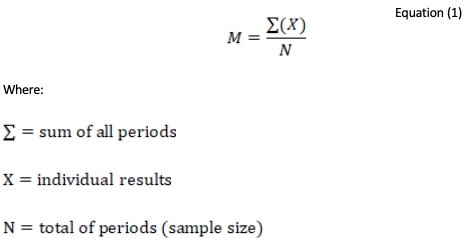
As observed, the results obtained previously under Mean, are necessary results of the empirical analysis of the study, therefore the calculation of the standard deviation is made in order to have greater clarity as to the variables studied in the investigation.
Thus, it can be deduced that the investments made in the studied variables (Mining and Energy) have greater variability (deviation) than the variable of agriculture and rural development (Wang, Shao, & Li, 2019; Agwa-Ejon & Pradhan, 2018), where this calculation showed the value of SD=1.88, To determine that investments in agriculture were uniform compared to the other variables of study, due to the importance of the sustainability of the world population, the statistical calculation regarding investment in mining yielded a standard deviation corresponding to SD=4.37, presenting a negative effect on pollution that threatens the environment due to its variability with respect to the investments made in different countries, reflecting uniformity in the face of global environmental sustainability, so that the infrastructure that presents a deviation of SD=2.78, has had a variability in their investments slightly more in line with the variable (Mining) than the incident (e) in greater proportion to ecological development (Marttunen, Haag, Belton, Mustajoki, & Lienert, 2019; Norman, Koch, & Hargrove, 2016).
Therefore, this leads us to determine that economic growth has greater variability compared to the other variables that are measured in the research, with a deviation of SD=4.62, showing a production dynamics for society by the variables studied, but providing ecological instability due to the uniformity of the dependent variable (Economic Growth), the variability of these sectors directly affects the ecology of each country (Yoon & Nadvi, 2018; McCarthy & Thatcher, 2016; Elliott, 2000), even though there is a relatively small margin of error in the context of the empirical analysis presented during the study, we highlight a coefficient of variance of CV=0.35, which represents a low margin of error, as observed with the variable of agriculture and rural development. On the other hand, the empirical calculation to obtain the standard deviation was made by the following Equation (2) :
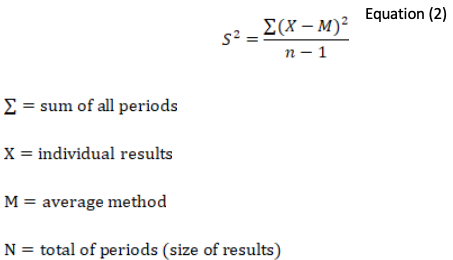
The coefficient of variation was calculated taking into account Equation (3) presented, in order to observe the margins of error that the variables have with respect to the variability that the standard deviation shows, due to the instability of variance that can present the variables studied according to the level of investment that each has worldwide, and which directly affects economic growth. The calculation of the coefficient of variation was obtained by the following Equation (3) in order to obtain the margin of error that each variable presents in its utopian participation of inclusive ecological development:
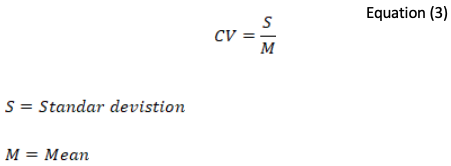
As mentioned above, the margin of error that gave the standard deviation in each of the variables of the research, is observed to be relatively low as taking into account the variable of agriculture and rural development, presenting a coefficient of varied 0.35 very close to 0, presenting an economic growth with a margin of error a little higher with a result of CV=0.91, also the variable Mining and Energy with a coefficient of variation of 0.62, which are close to 1.
Thus, according to the planet faces great problems that have brought different consequences with the passage of time thus directly affecting all its inhabitants (Hallegatte & Dumas, 2009; Skidmore & Toya, 2002), sustainable development being one of the main disadvantages due to the fact that countries wanting to enjoy the dynamism of their economy are subjected to pollutants.
For sustainable development, resources must be projected to future generations, which is a difficult goal to achieve in countries where high levels of poverty, social inequality, irrational, and unreasonable use of natural resources are constant.
Table 3
Correlation coefficient
Variables |
Mean |
SD |
1 |
2 |
3 |
4 |
5 |
Economic growth |
5.1 |
4.62 |
1 |
||||
Mining and Energy |
7.1 |
4.37 |
0.98** |
1 |
|||
Social Mobility |
5.6 |
2.01 |
-0.09* |
0.1 |
1 |
||
Agriculture and Rural Development |
5.4 |
1.88 |
0.77*** |
0.8* |
0.31 |
1 |
|
Infrastructure |
6.5 |
2.78 |
-0.92* |
-0.9 |
0.15* |
-0.49 |
1 |
*p<0.10., **p<0.05., ***p<0.001
Source: Own elaboration (2018)
The Correlation Coefficient has been calculated by the Equation (4) which provides the correlation between two variables, the equation used is the following:
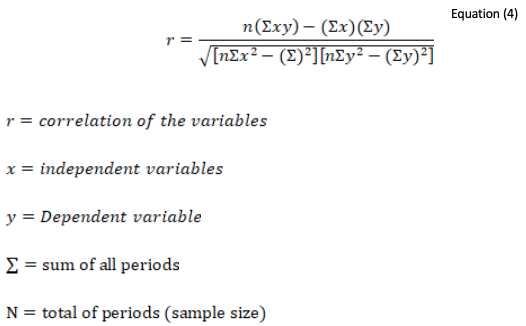
The results calculated by the correlation coefficient (see Figure 3), indicate a high correlation between agriculture and its rural development against economic growth, i.e. P=0.77 (***), as well as the infrastructure is a significant correlation with respect to economic growth, with a negative correlation P=-0.92 (*). The dependent variable (economic growth) with respect to the independent variables generates global environmental instability, as has been highlighted above.
There is a positive relationship in infrastructure investments worldwide, as detailed in Figure 3, which has a strong positive correlation r=1.56 (see Figure 3), with a high share of economic growth, representing a strong negative relation r=-2.51 (see Figure 4), As a result, there was a constant and parallel percentage decrease in 2010 (22.5%) to 2014 (22%) in global economic growth. However, current economic growth affects other sources of natural resources.
Figure 3
Correct relationship in a Correlation: Infrastructure
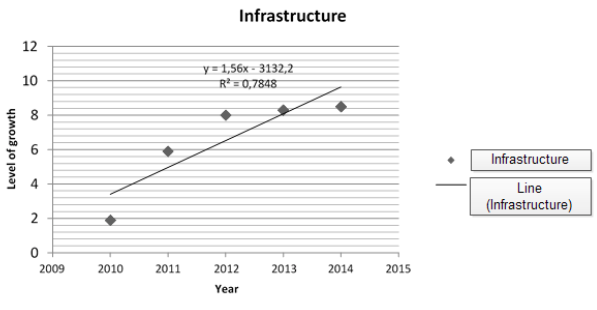
Source: Own elaboration (2018)
The hypotheses set out below are part of the strategies that countries seek during economic development processes, where different sectors operate and in which the variables involved are responsible for economic growth, being managers of the low global ecological development, as is revealed by World Bank data and the statistical and empirical analysis of the research.
H1. Policies promoting green growth are being promoted.
The results for an ecological performance presented in Figure 4 provide strong support for H1, which highlights a negative relationship between the context of economic growth and the dynamism of industries. Development in the ecological field yields negatively a correlation R2=0.74, and explains that the 74% dispersion of the line is more linear and negative, given the dynamics of the variables that generate development.
H2. The economic development of a country will not depend on its natural resources.
At the global level, companies and industries have large participation in integrated economies; the positive dynamics of economies are directly related to the population that generates resources and are involved in environmental adaptation. A positive relation in a correlation, shows the figure’s details of the result of the coefficient of determination (positive) with R2=0.78 belonging to a 78% in the line near 1, which shows that H2 is positive, and the economic development ahead of the dynamism of infrastructure regularly affects the levels of the global ecological system.
Another control variable to be highlighted in economic growth is in the GDP per capita, which shows a positive relationship with the adoption of an environmental liability code. However, as a basic tool, ISO14001 standards contribute to the generation of a structure of economic growth and companies invest considerable resources to make environmental improvements (Song, Montabon, & Xu, 2018; Eryigit & Özcüre, 2015; Corbett & Kirsch, 2001; Anderson, Daly, & Johnson 1999).
Partial correlations indicate that there is no relationship between the development of social infrastructure and environmental management of firms, that is P=0.15 (*), R2=0.78 when this correlation is controlled by the effect of ecological development.
The results of Figure 3 and Figure 4 positively support H2 that articulates the link between economic growth and ecological development. In particular, the ISO14001 standard in countries is positively linked to provide the ecological context.
H3. Ecological development increases the competitiveness and social sustainability of a country.
It should be noted that economic wealth, as measured by GDP per capita, was also positively and significantly related to the variable industrial production and the competitiveness of the country against social support (Presno, Landajo, & Fernández González, 2018; Hurtado & Martinez, 2018; Andreano, Laureti, & Postiglione, 2013), but negatively related to the environmental innovation detailed in the results dispersed that faces the social development, this yields a negative relation R2=0.0 dispersed by no relation (Przychodzen & Przychodzen, 2018; Yan & Guan, 2018).
This last result is unexpected since many studies found that people in richer countries do not care about the protection of the environment and have a greater expectation for companies to act in a less aggressive way with the environment (Shao, Tian, & Fan, 2018; de Hert & Papakonstantinou, 2017; Husted, 2005). In addition, studies suggest that a country's innovative infrastructure coupled with cluster availability can determine innovation capacity as demonstrated by Avilés Ochoa & Canizalez Ramírez (2018); Furman, Porter, & Stern, (2002). This unexpected result is explained by the relationship between GDP per capita (economic growth) (Fernandez Hurtado & Martinez Martinez, 2018) and ecological development. Partial correlations indicate that, when controlling for the effect of ecological development, economic growth is not significantly linked to environmental innovation, the correlation was however negative P=-0.9, R2=0.0 (see Figure 5).
Figure 4
Positive Relationship in a Correlation: Economic Growth
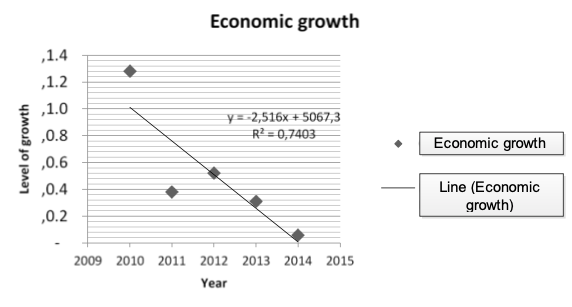
Source: Own elaboration (2018)
As shown in Figure 5, there is no correlation between the variable level of growth and social mobility due to the dispersion presented with a value of r approximated to zero (r=-0.26), so it is a variable not relevant in the study , although their level of investment is high and dispersed (Marttunen et al., 2019; Bachmann, Elstner, & Hristov, 2017).
Figure 5
Positive Relationship in a Correlation: Economic Growth
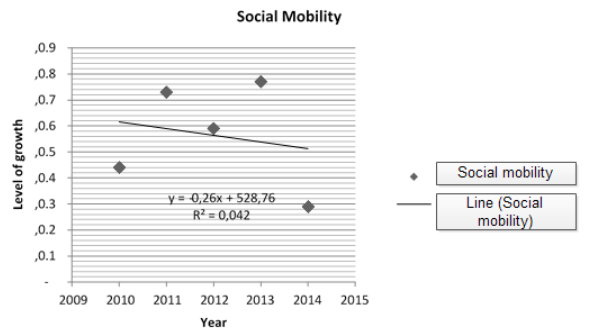
Source: Own elaboration (2018)
In order that there be a sustainable development and an ecological growth of resources, measures must be implemented to solve problems aimed at mitigating the mismanagement of resources infused in modern life. This requires greater inclusion and social equity, as well as awareness of what is happening in our environment. We must work on mechanisms that promote a better exploitation of resources in the different areas of the economies, where there must be models that have a future projection that determines a greater integrity between inclusive ecological growth and the social conscience that generates responsibility that is not based on a consumer culture.
To achieve ecological growth, emphasis should be placed on a change not only for the people but also for the capitalist industries that contributes to raising the standards of living for future generations and people. We must work on the design of strategies and efficient alternatives that contribute to the promotion of ecological policies that generate development and promote the care of the environment, for the generation of an inclusive ecological development taking into account the optimization of resources assigned to each territory with good execution of allocated resources and the formulation of public policies that prioritize a sustainable decision making that contributes to valuing our natural resources for the increase of natural capital.
The quality of the environment and its relation with the worldwide economies leads to achieve sustainability and economic growth. Therefore, the methodology implemented with descriptive data that clearly indicate the different relationships between the industrial production of the regions and the lack of development in the field of ecology to counteract the impacts and reflect the consumer population, which with over time, will be able to eliminate non-renewable resources.
This research and its results are presented with previous studies, studying the causes of industrial pollution as generating negative effects against ecology, concluding that for the achievement of environmental sustainability, government support is essential for the emanation of changes in the regions, which contribute to a more equitable society.
Eco-friendly development will increase the competitiveness of industries, thus gaining benefits that will be rewarded in one way or another to the environment by mitigating environmental impact.
Globalization brings great opportunities for industries to develop in a much wider market; at the same time, it is necessary for society to become aware of the care of the planet. This research provides an insight into the relationship between ecological development management and social sustainability. Competition between industries must include sustainable development policies towards equity, as well as the motivation for industries to contribute to the welfare of society through participation in the protection of natural resources.
Agwa-Ejon, J. F., & Pradhan, A. (2018). Life cycle impact assessment of artisanal sandstone mining on the environment and health of mine workers. Environmental Impact Assessment Review, 72, 71–78. http://doi.org/10.1016/j.eiar.2018.05.005
Anderson, S. W., Daly, J. D., & Johnson, M. F. (1999). Why firms seek ISO 9000 certification: Regulatory compliance or competitive advantage? Production and Operations Management, 8(1), 28–43. http://doi.org/10.1111/j.1937-5956.1999.tb00059.x
Andreano, M. S., Laureti, L., & Postiglione, P. (2013). Economic growth in MENA countries: Is there convergence of per-capita GDPs? Journal of Policy Modeling, 35(4), 669–683. http://doi.org/10.1016/j.jpolmod.2013.02.005
Arnell, N. W., van Vuuren, D. P., & Isaac, M. (2011). The implications of climate policy for the impacts of climate change on global water resources. Global Environmental Change, 21(2), 592–603. http://doi.org/10.1016/j.gloenvcha.2011.01.015
Atinga, R. A., Agyepong, I. A., & Esena, R. K. (2019). Willing but unable? Extending theory to investigate community capacity to participate in Ghana’s community-based health planning and service implementation. Evaluation and Program Planning, 72, 170–178. http://doi.org/10.1016/j.evalprogplan.2018.10.001
Avilés Ochoa, E., & Canizalez Ramírez, P. M. (2018, September 1). Cultural industries and spatial economic growth a model for the emergence of the creative cluster in the architecture of Toronto. City, Culture and Society. Elsevier. http://doi.org/10.1016/j.ccs.2018.03.001
Aznar-Sánchez, J. A., Velasco-Muñoz, J. F., Belmonte-Ureña, L. J., & Manzano-Agugliaro, F. (2019). Innovation and technology for sustainable mining activity: A worldwide research assessment. Journal of Cleaner Production, 221, 38–54. http://doi.org/10.1016/j.jclepro.2019.02.243
Bachmann, R., Elstner, S., & Hristov, A. (2017). Surprise, surprise – Measuring firm-level investment innovations. Journal of Economic Dynamics and Control, 83, 107–148. http://doi.org/10.1016/j.jedc.2017.07.009
Bauhardt, C. (2014). Solutions to the crisis? The Green New Deal, Degrowth, and the Solidarity Economy: Alternatives to the capitalist growth economy from an ecofeminist economics perspective. Ecological Economics, 102, 60–68. http://doi.org/10.1016/j.ecolecon.2014.03.015
Brand, U., & Niedermoser, M. K. (2019). The role of trade unions in social-ecological transformation: Overcoming the impasse of the current growth model and the imperial mode of living. Journal of Cleaner Production, 225, 173–180. http://doi.org/10.1016/j.jclepro.2019.03.284
Carrión-Flores, C. E., & Innes, R. (2010). Environmental innovation and environmental performance. Journal of Environmental Economics and Management, 59(1), 27–42. http://doi.org/10.1016/j.jeem.2009.05.003
Chasek, P., Akhtar-Schuster, M., Orr, B. J., Luise, A., Rakoto Ratsimba, H., & Safriel, U. (2019). Land degradation neutrality: The science-policy interface from the UNCCD to national implementation. Environmental Science and Policy, 92, 182–190. http://doi.org/10.1016/j.envsci.2018.11.017
Chen, C. C. (2006). Development of a framework for sustainable uses of resources: More paper and less plastics? Environment International, 32(4), 478–486. http://doi.org/10.1016/j.envint.2005.11.001
Choy, L. H. T., & Li, V. J. (2017). The role of higher education in China’s inclusive urbanization. Cities, 60, 504–510. http://doi.org/10.1016/j.cities.2016.04.008
Cook, D., Saviolidis, N. M., Davíðsdóttir, B., Jóhannsdóttir, L., & Ólafsson, S. (2017). Measuring countries’ environmental sustainability performance—The development of a nation-specific indicator set. Ecological Indicators, 74, 463–478. http://doi.org/10.1016/j.ecolind.2016.12.009
Corbett, C. J., & Kirsch, D. a. (2001). International diffusion of ISO 14000 certification. Production and Operations Management, 10(3), 327–342. http://doi.org/10.1111/j.1937-5956.2001.tb00378.x
Davis, K. F., Rulli, M. C., Garrassino, F., Chiarelli, D., Seveso, A., & D’Odorico, P. (2017). Water limits to closing yield gaps. Advances in Water Resources, 99, 67–75. http://doi.org/10.1016/j.advwatres.2016.11.015
de Hert, P., & Papakonstantinou, V. (2017). The rich UK contribution to the field of EU data protection: Let’s not go for “third country” status after Brexit. Computer Law and Security Review, 33(3), 354–360. http://doi.org/10.1016/j.clsr.2017.03.008
de Lange, D. E. (2017). Start-up sustainability: An insurmountable cost or a life-giving investment? Journal of Cleaner Production, 156, 838–854. http://doi.org/10.1016/j.jclepro.2017.04.108
De Roeck, F. (2019). Governmentality and the climate-development nexus: The case of the EU Global Climate Change Alliance. Global Environmental Change, 55, 160–167. http://doi.org/10.1016/j.gloenvcha.2019.02.006
Despotovic, D., Cvetanovic, S., Nedic, V., & Despotovic, M. (2016). Economic, social and environmental dimension of sustainable competitiveness of European countries. Journal of Environmental Planning and Management, 59(9), 1656–1678. http://doi.org/10.1080/09640568.2015.1085370
Douglas, I. (2018). The challenge of urban poverty for the use of green infrastructure on floodplains and wetlands to reduce flood impacts in intertropical Africa. Landscape and Urban Planning, 180, 262–272. http://doi.org/10.1016/j.landurbplan.2016.09.025
Echchelh, A., Hess, T., & Sakrabani, R. (2018). Reusing oil and gas produced water for irrigation of food crops in drylands. Agricultural Water Management. http://doi.org/10.1016/j.agwat.2018.05.006
Elliott, D. (2000). Renewable energy and sustainable futures. Futures, 32, 261–274. Retrieved from www.elsevier.com/locate/futures
Eryigit, N., & Özcüre, G. (2015). Eco-Innovation as Modern Era Strategy of Companies in Developing Countries: Comparison Between Turkey and European Union. Procedia - Social and Behavioral Sciences, 195, 1216–1225. http://doi.org/10.1016/j.sbspro.2015.06.246
Fernandez Hurtado, S. R., & Martinez Martinez, L. A. (2018). Challenges to Undertake and Innovate in Colombia: Is the New Problematic of the 21st Century? International Education Studies, 11(3), 29. http://doi.org/10.5539/ies.v11n3p29
Fernandez, S. R., & Betancur, J. P. (2013). Production Capabilities Decision Making : Biopharama , Inc , Study Case. International Journal of Humanities and Social Science, 3(16), 241–249. Retrieved from www.ijhssnet.com
Flores-Larsen, S., Filippín, C., & Barea, G. (2019). Impact of climate change on energy use and bioclimatic design of residential buildings in the 21st century in Argentina. Energy and Buildings, 184, 216–229. http://doi.org/10.1016/j.enbuild.2018.12.015
Furman, J. L., Porter, M. E., & Stern, S. (2002). The determinants of national innovative capacity. Research Policy, 31(6), 899–933. http://doi.org/10.1016/S0048-7333(01)00152-4
Gaupp, F., Hall, J., Mitchell, D., & Dadson, S. (2019). Increasing risks of multiple breadbasket failure under 1.5 and 2 °C global warming. Agricultural Systems, 175, 34–45. http://doi.org/10.1016/j.agsy.2019.05.010
Hallegatte, S., & Dumas, P. (2009). Can natural disasters have positive consequences? Investigating the role of embodied technical change. Ecological Economics, 68(3), 777–786. http://doi.org/10.1016/j.ecolecon.2008.06.011
Hansen, J., Hellin, J., Rosenstock, T., Fisher, E., Cairns, J., Stirling, C., … Campbell, B. (2019). Climate risk management and rural poverty reduction. Agricultural Systems, 172, 28–46. http://doi.org/10.1016/j.agsy.2018.01.019
He, Q., Zhou, G., Lü, X., & Zhou, M. (2019). Climatic suitability and spatial distribution for summer maize cultivation in China at 1.5 and 2.0 °C global warming. Science Bulletin. http://doi.org/10.1016/j.scib.2019.03.030
Honarvar, A. R., & Sami, A. (2018, June 26). Towards Sustainable Smart City by Particulate Matter Prediction Using Urban Big Data, Excluding Expensive Air Pollution Infrastructures. Big Data Research. Elsevier. http://doi.org/10.1016/j.bdr.2018.05.006
Horbach, J., Rammer, C., & Rennings, K. (2012). Determinants of eco-innovations by type of environmental impact - The role of regulatory push/pull, technology push and market pull. Ecological Economics, 78, 112–122. http://doi.org/10.1016/j.ecolecon.2012.04.005
Hurtado, S. R. F., & Martinez, L. A. M. (2018). Entropía: La constante en los sistemas de competitividad agropecuaria en el difícil entorno colombiano. In Crescendo Ciencias Contables & Administrativas, 4(2), 361–373. http://doi.org/10.21895/IN CRES CCFF.V4I2.1617
Husted, B. W. (2005). Culture and Ecology: A Cross-National Study of the Determinants of Environmental Sustainability. MIR: Management International Review, 45(3), 349–371.
Hysa, B., & Spalek, S. (2019). Opportunities and threats presented by social media in project management. Heliyon, 5(4), e01488. http://doi.org/10.1016/j.heliyon.2019.e01488
Kiendrebeogo, Y., Assimaidou, K., & Tall, A. (2017). Social protection for poverty reduction in times of crisis. Journal of Policy Modeling, 39(6), 1163–1183. http://doi.org/10.1016/j.jpolmod.2017.09.003
Koutroulis, A. G. (2019). Dryland changes under different levels of global warming. Science of the Total Environment, 655, 482–511. http://doi.org/10.1016/j.scitotenv.2018.11.215
Lee, C. C., Chang, C. H., Arouri, M., & Lee, C. C. (2016). Economic growth and insurance development: The role of institutional environments. Economic Modelling, 59, 361–369. http://doi.org/10.1016/j.econmod.2016.08.010
Li, J., & Lin, B. (2019). The sustainability of remarkable growth in emerging economies. Resources, Conservation and Recycling, 145, 349–358. http://doi.org/10.1016/j.resconrec.2019.01.036
Li, Y., Tao, H., Su, B., Kundzewicz, Z. W., & Jiang, T. (2019). Impacts of 1.5 °C and 2 °C global warming on winter snow depth in Central Asia. Science of the Total Environment, 651, 2866–2873. http://doi.org/10.1016/j.scitotenv.2018.10.126
Mahon, N., Crute, I., Di Bonito, M., Simmons, E. A., & Islam, M. M. (2018). Towards a broad-based and holistic framework of Sustainable Intensification indicators. Land Use Policy, 77, 576–597. http://doi.org/10.1016/j.landusepol.2018.06.009
Martinez Martinez, L. A., & Fernandez Hurtado, S. R. (2018). Internal Communication Issues in the Firms: Does It Affect the Productivity? Review of European Studies, 10(2), 1. http://doi.org/10.5539/res.v10n2p1
Marttunen, M., Haag, F., Belton, V., Mustajoki, J., & Lienert, J. (2019). Methods to inform the development of concise objectives hierarchies in multi-criteria decision analysis. European Journal of Operational Research, 277, 604–620. http://doi.org/10.1016/j.ejor.2019.02.039
McCarthy, J., & Thatcher, J. (2016, April 6). Visualizing new political ecologies: A critical data studies analysis of the World Bank’s renewable energy resource mapping initiative. Geoforum. Pergamon. http://doi.org/10.1016/j.geoforum.2017.03.025
Mitra, A., & Nagar, J. P. (2018). City size, deprivation and other indicators of development: Evidence from India. World Development, 106, 273–283. http://doi.org/10.1016/j.worlddev.2018.02.018
Norman, S. P., Koch, F. H., & Hargrove, W. W. (2016). Review of broad-scale drought monitoring of forests: Toward an integrated data mining approach. Forest Ecology and Management. http://doi.org/10.1016/j.foreco.2016.06.027
Presno, M. J., Landajo, M., & Fernández González, P. (2018). Stochastic convergence in per capita CO 2 emissions. An approach from nonlinear stationarity analysis. Energy Economics, 70, 563–581. http://doi.org/10.1016/j.eneco.2015.10.001
Przychodzen, W., & Przychodzen, J. (2018). Sustainable innovations in the corporate sector – The empirical evidence from IBEX 35 firms. Journal of Cleaner Production, 172, 3557–3566. http://doi.org/10.1016/j.jclepro.2017.05.087
Pu, Z., Fu, J., Zhang, C., & Shao, J. (2018). Structure decomposition analysis of embodied carbon from transition economies. Technological Forecasting and Social Change, 135, 1–12. http://doi.org/10.1016/j.techfore.2018.07.002
Rai, S. M., Brown, B. D., & Ruwanpura, K. N. (2019). SDG 8: Decent work and economic growth – A gendered analysis. World Development, 113, 368–380. http://doi.org/10.1016/j.worlddev.2018.09.006
Rubashkina, Y., Galeotti, M., & Verdolini, E. (2015). Environmental regulation and competitiveness: Empirical evidence on the Porter Hypothesis from European manufacturing sectors. Energy Policy, 83, 288–300. http://doi.org/10.1016/j.enpol.2015.02.014
Saúl Rick Fernández Hurtado, Tabares, J. M., Enríquez Martínez, F. A., Hoyos Bravo, A., Gutiérrez Gonzàlez, S. T., Vásquez Olave, M. C., … Arango, M. N. (2018). Emprendimiento en Cali: Análisis dinámico. Cali. Retrieved from https://isbn.camlibro.com.co/catalogo.php?mode=detalle&nt=315893
Shao, S., Tian, Z., & Fan, M. (2018). Do the rich have stronger willingness to pay for environmental protection? New evidence from a survey in China. World Development, 105, 83–94. http://doi.org/10.1016/j.worlddev.2017.12.033
Skidmore, M., & Toya, H. (2002). Do natural disasters promote long-run growth? Economic Inquiry, 40(4), 664–687. http://doi.org/10.1093/ei/40.4.664
Song, F. (Sophie), Montabon, F., & Xu, Y. (2018). The impact of national culture on corporate adoption of environmental management practices and their effectiveness. International Journal of Production Economics, 205, 313–328. http://doi.org/10.1016/j.ijpe.2018.09.020
Stewart, B. A., & Lal, R. (2018). Increasing World Average Yields of Cereal Crops: It’s All About Water. Advances in Agronomy, 151, 1–44. http://doi.org/10.1016/bs.agron.2018.05.001
van Noordwijk, M. (2019). Integrated natural resource management as pathway to poverty reduction: Innovating practices, institutions and policies. Agricultural Systems, 172, 60–71. http://doi.org/10.1016/j.agsy.2017.10.008
Wang, X., Shao, S., & Li, L. (2019). Agricultural inputs, urbanization, and urban-rural income disparity: Evidence from China. China Economic Review, 55, 67–84. http://doi.org/10.1016/j.chieco.2019.03.009
Yan, Y., & Guan, J. C. (2018). Social capital, exploitative and exploratory innovations: The mediating roles of ego-network dynamics. Technological Forecasting and Social Change, 126, 244–258. http://doi.org/10.1016/j.techfore.2017.09.004
Yang, C. H., Tseng, Y. H., & Chen, C. P. (2012). Environmental regulations, induced R&D, and productivity: Evidence from Taiwan’s manufacturing industries. Resource and Energy Economics, 34(4), 514–532. http://doi.org/10.1016/j.reseneeco.2012.05.001
Yoon, S., & Nadvi, K. (2018). Industrial clusters and industrial ecology: Building ‘eco-collective efficiency’ in a South Korean cluster. Geoforum, 90, 159–173. http://doi.org/10.1016/j.geoforum.2018.01.013
1. Professional of Industrial Engineering, Faculty of Engineering, Universidad Autónoma de Occidente. Email: angelamtz5th@hotmail.com
2. Post doctor in Globalization and Regional Development, Center for Global Studies, Shanghai University – China. Doctor in Management Science and Engineering, Shanghai University. Profesor del Departamento de Economía, Contabilidad y Finanzas, Universidad Santiago de Cali. Email: saulrick@163.com
3. Candidato a Doctor en Administración Gerencial, Universidad Benito Juárez. Magister en mercadeo, Universidad Libre. Profesor del Departamento de Economía, Contabilidad y Finanzas, Universidad Santiago de Cali. Email: jomabu18@gmail.com
4. Doctor in Logistic Management and Engineering, Shanghai Maritime University – China. Master in international trade, East China University of Science & Technology – China. Email: reginemilena@yahoo.fr